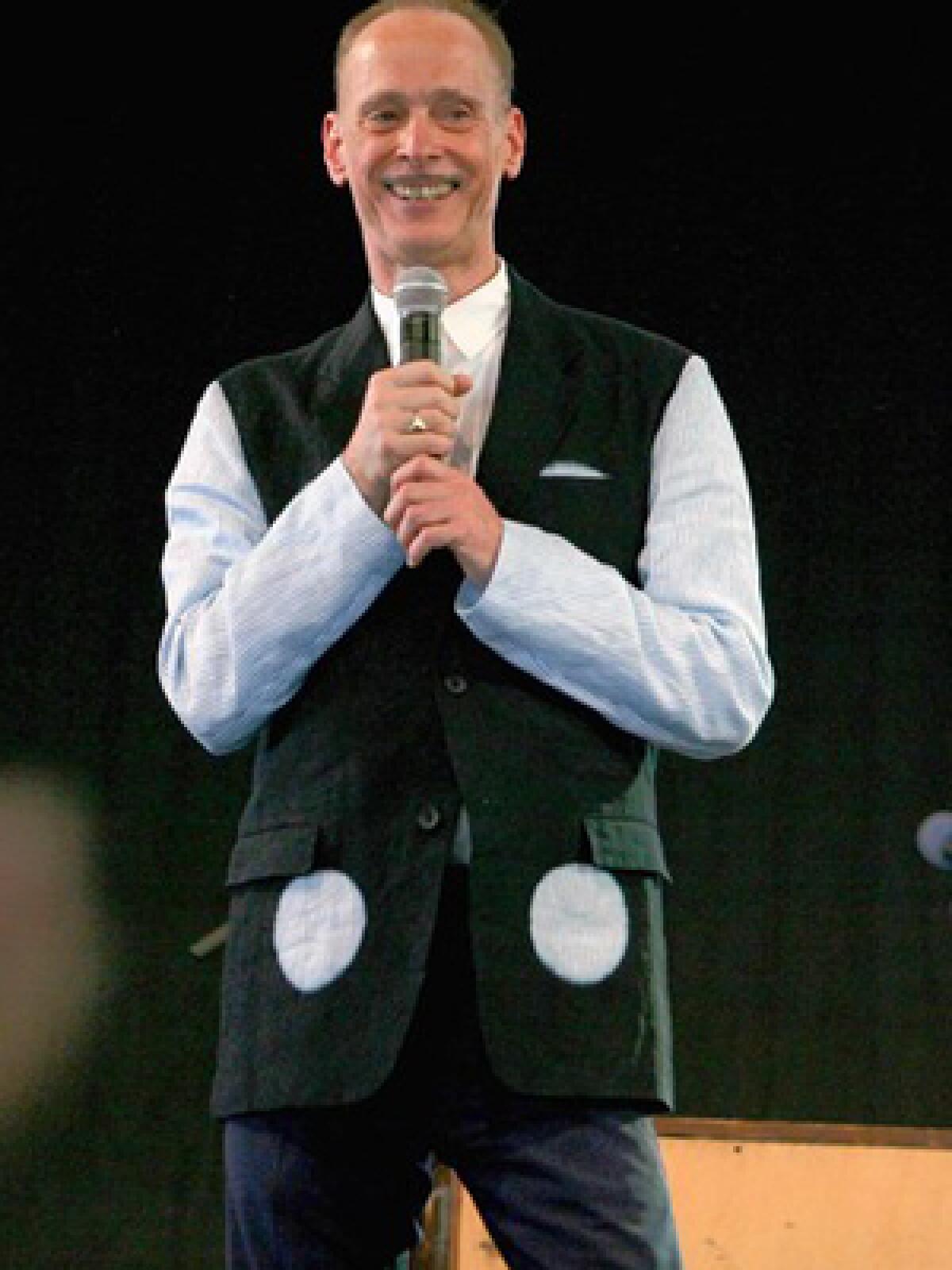Book review: ‘Role Models’ by John Waters

- Share via
Is John Waters a victim of his own popularity? The pencil-mustached favorite son of Baltimore started out as a purveyor of the outrageous; his greatest star, the 300-pound transvestite Divine, once ate dog feces on screen. (No, it wasn’t a special effect.)
But Waters’ gleeful tastelessness has been softened by mainstream acceptance, beginning with his 1988 film “Hairspray,” which became a modest breakthrough hit. The story of a hefty girl who integrates an early 1960s TV dance show, it was eventually turned into a Broadway show that won eight Tony Awards, including best musical — and then was remade as a big-budget film.
And yet, even as his work has been translated and re-translated for a new audience, Waters has remained an iconoclast.
He makes this clear with “ Role Models,” a book of essays about the people who have inspired him. Here, you’ll find Tennessee Williams; Patty McCormack, child star of the 1956 movie “The Bad Seed”; Manson girl Leslie Van Houten; and crooner Johnny Mathis.
Waters is, of course, more in the habit of celebrating perversions than he is in finding the kink in perfection. More than once, he reminds us that William S. Burroughs once called him “The Pope of Trash.” When it comes to Mathis, Waters wonders if the source of his obsession is that the singer “is the polar opposite of me?”
Mathis is smooth, perfect and effortlessly popular, an image that holds when Waters interviews him at his Hollywood Hills home. The resulting piece is more than just a profile, though; it’s name-droppy, discursive and threaded through with Waters’ cockeyed point of view.
He riffs on characters of yesteryear — Dagmar (“the first single-name bombshell”) and Clarabell (“the psychotic clown on ‘The Howdy Doody Show,’ whose makeup later inspired Divine’s”) — and goes to a Mathis Christmas show. “Was watching this concert torture, or was it perfect?” he asks us, expressing his own aesthetic perfectly.
The essays in “Role Models” meander pleasantly around personalities, recollections and ideas, always finding glory in the flaws. Waters lauds the stained, mismatched and deconstructed designs of Comme des Garçons, and fondly recalls Baltimore’s gritty, sometimes dangerous, dive bar scene.
Some of this is slightly familiar territory, as when he writes about Lady Zorro, a Baltimore stripper “so butch, so scary, so Johnny Cash,” mentioned in his 1987 book “Crackpot: The Obsessions of John Waters.”
In “Role Models,” however, Waters discovers that she had a daughter, and he tracks the younger woman down to get her perspective. That he tells the story with honesty and compassion — an angry, self-destructive lesbian is less of a punch line when she’s your mother — is what makes Waters special. Within his jokes and winks and countercultural jabs, he is striving for real human emotion. He is also kind.
Such kindness also motivates the piece on Van Houten, whom Waters has befriended. Still, for obvious reasons, this remains the most problematic piece in the collection. Waters largely dodges the murky moral issues of her story, staying instead in raconteur mode.
He slips from his early, campy fascination with the Manson murders to a weak explanation of Van Houten’s involvement (she was a more active participant in the death of Rosemary LaBianca than Waters suggests). He also covers their friendship, the inequities of her punishment and arguments in favor of parole.
Most interestingly, Waters sees, in the LSD-fueled mayhem of his early filmmaking collective, commonalities with the outsiders who made up the Manson family. But there’s a qualitative difference between trash and terror, which he doesn’t fully address.
Waters finds his footing in the last three essays, which move from amateur gay porn to high art to a rousing misfit call-to-arms. He describes the films and photographs of these fallen-on-hard-times gay pornographers in adoring detail. “Make friends with your neuroses,” he writes. “Some of us want hot lunatic porn sex and we want it forever!”
And when he — a longtime art collector — writes about the pieces he’s acquired, he thrills most at the reactions they provoke. “I love how mad Mike [Kelley]’s work can make some people,” he tells us. “ Isn’t that the job of contemporary art? To infuriate?”
If Waters began his career by seeking to infuriate, he now has mellowed to a place of gleeful tweaking. “Role Models” is charming and chatty; if it falters in places, it also reveals the making of a unique American artist through his influences. When he calls for people to make him a cult leader of filth — having left trash behind for becoming too acceptable — it’s hard for any outsider not to want to follow along.
carolyn.kellogg@latimes.com
More to Read
The biggest entertainment stories
Get our big stories about Hollywood, film, television, music, arts, culture and more right in your inbox as soon as they publish.
You may occasionally receive promotional content from the Los Angeles Times.











